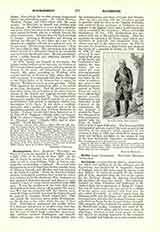

Rochester, Ancient See of (ROFFA; ROFFENSIS), the oldest and smallest of all the suffragan sees of Canterbury, was founded by St. Augustine, Apostle of England, who in 604 consecrated St. Justus as its first bishop. It consisted roughly of the western part of Kent, separated from the rest of the county by the Medway, though the diocesan boundaries did not follow the river very closely. The cathedral, founded by King Ethelbert and dedicated to St. Andrew from whose monastery at Rome St. Augustine and St. Justus had come, was served by a college of secular priests and endowed with land near the city called Priestfield. It suffered much from the Mercians (676) and the Danes, but the city retained its importance, and after the Norman Conquest a new cathedral was begun by the Norman bishop Gundulf. This energetic prelate replaced the secular chaplains by Benedictine monks, translated the relics of St. Paulinus to a silver shrine which became a place of pilgrimage, obtained several royal grants of land, and proved an untiring benefactor to his cathedral city. Gundulf had built the nave and western front before his death; the western transept was added between 1179 and 1200, and the eastern transept during the reign of Henry III. The cathedral is small, being only 306 feet long, but its nave is the oldest in England and it has a fine Norman crypt. Besides the shrine of St. Paulinus, the cathedral contained the relics of St. Ithamar, the first Saxon to be consecrated to the episcopate, and St. William of Perth, who was held in popular veneration. In 1130 the cathedral was consecrated by the Archbishop of Canterbury assisted by thirteen bishops in the presence of Henry I, but the occasion was marred by a great fire which nearly destroyed the whole city and damaged the new cathedral. After the burial of St. William of Perth in 1201 the offerings at his tomb were so great, that by their means the choir was rebuilt and the central tower was added (1343), thus completing the cathedral. From the foundation of the see the archbishops of Canterbury had enjoyed the privilege of nominating the bishop, but Archbishop Theobald transferred the right to the Benedictine monks of the cathedral who exercised it for the first time in 1148.
The following is the list of bishops with the date of their accession; but the succession from Tatnoth (844) to Siweard (1058) is obscure, and may be modified by fresh research:
St. Justus, 604
Romanus, 624
Vacancy, 625
St. Paulinus, 633
St. Ithamar, 644
Damianus, 655
Vacancy, 664
Putta, 666-9
Cwichelm, 676
Gebmund, 678
Tobias, 693-706
Ealdwulf, 727
Dunno, 741
Eardwulf, 747
Deora, 765-72
Waermund I, 781-5
Beornmod, 803-5
Tatnoth, 844
Beadunoth (possibly identical with Waermund II)
Waermund II, 845-62
Cuthwulf, 860-8
Swithwulf (date unknown)
Ceolmund, 897-904
Cynefrith (date unknown)
Burhric, 933 or 934
Beorhtsige (doubtful name)
Daniel, 951-5
Aelfstan, c. 964
Godwine I, 995
Godwine II (date unknown)
Siweard, 1058
Arnost, 1076
Gundulf, 1077
Radulphus d’Escures, 1108
Ernulf, 1115
John of Canterbury, 1125
John of Sees, 1137
Ascelin, 1142
Walter, 1148
Gualeran, 1182
Gilbert de Glanvill, 1185
Benedict de Sansetun, 1215
Henry Sandford, 1226
Richard de Wendover, 1235 (consecrated, 1238)
Lawrence de St. Martin, 1251
Walter de Merton, 1274
John de Bradfield, 1277
Thomas Inglethorp, 1283
Thomas de Wouldham, 1292
Vacancy, 1317
Hamo de Hythe, 1319
John de Sheppey, 1352
William of Whittlesea, 1362
Thomas Trilleck, 1364
Thomas Brinton, 1373
William de Bottisham, 1389
John de Bottisham, 1400
Richard Young, 1404
John Kemp, 1419 (afterwards Cardinal)
John Langdon, 1421
Thomas Brown, 1435
William Wells, 1437
John Lowe, 1444
Thomas Rotheram (or Scott), 1468
John Alcock, 1472
John Russell, 1476
Edmund Audley, 1480
Thomas Savage, 1492
Richard Fitz James, 1496
Bl. John Fisher, 1504 (Cardinal)
Schismatical bishops:
John Hilsey, 1535
Richard Heath, 1539
Henry Holbeach, 1543
Nicholas Ridley, 1547
John Poynet, 1550
John Scory, 1551
Vacancy, 1552
The canonical line was restored by the appointment in 1554 of Maurice Griffith, the last Catholic bishop of Rochester, who died in 1558. The diocese was so small, consisting merely of part of Kent, that it needed only one archdeacon (Rochester) to supervise the 97 parishes. It was also the poorest diocese in England. The cathedral was dedicated to St. Andrew the Apostle. The arms of the see were argent, on a saltire gules an Escalop shell, or.
EDWIN BURTON

